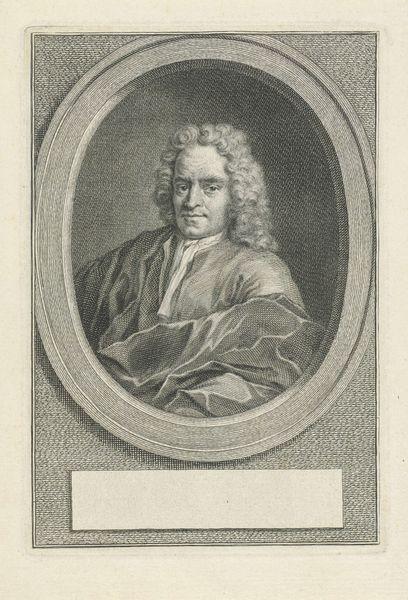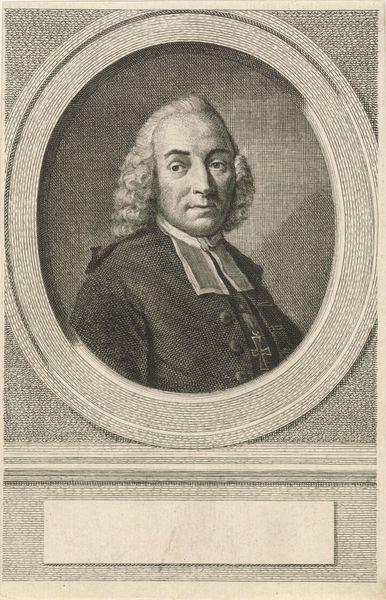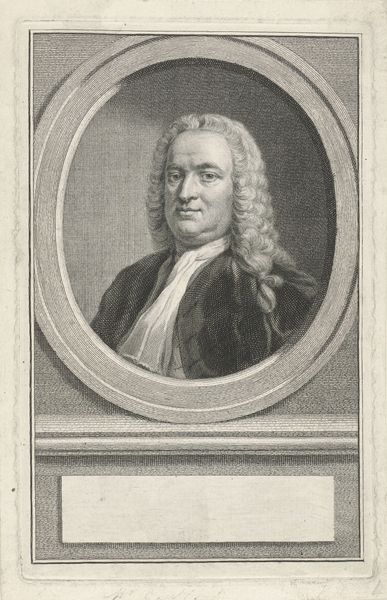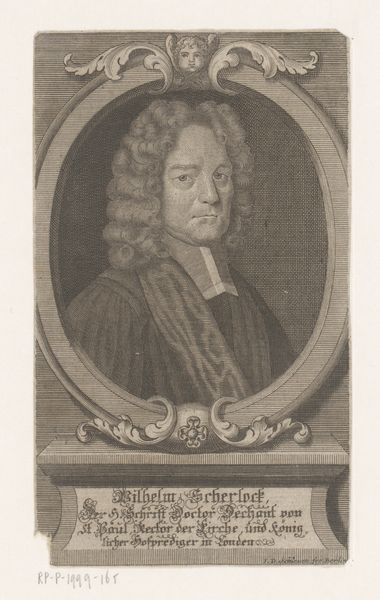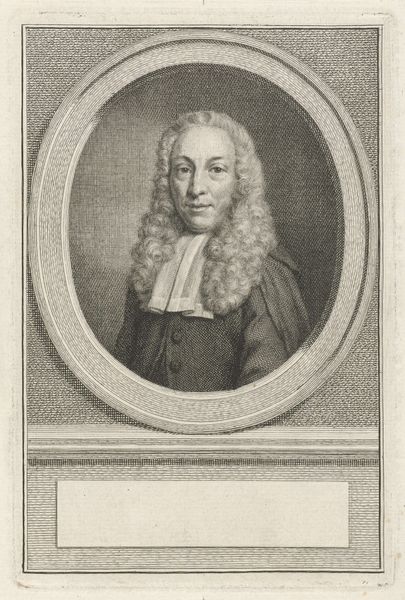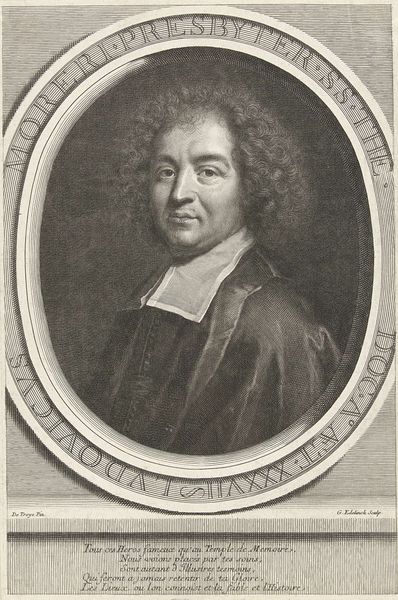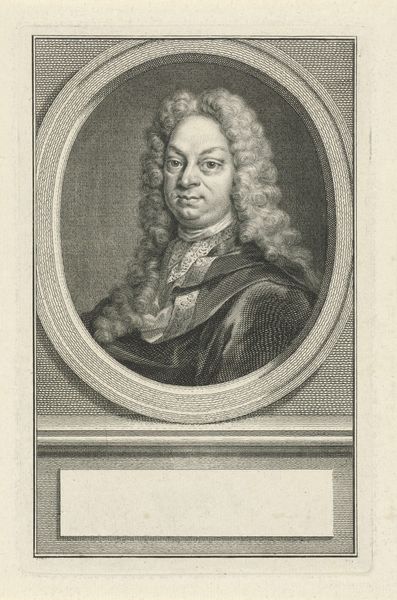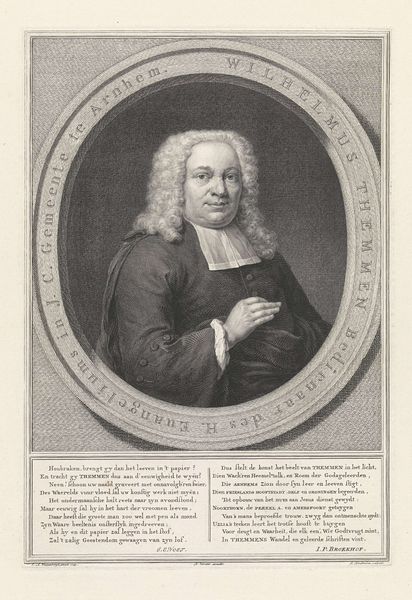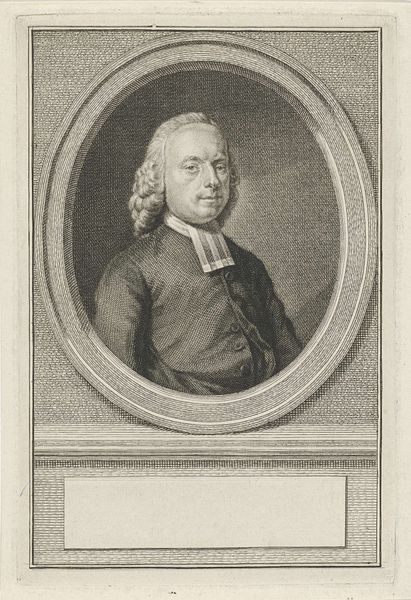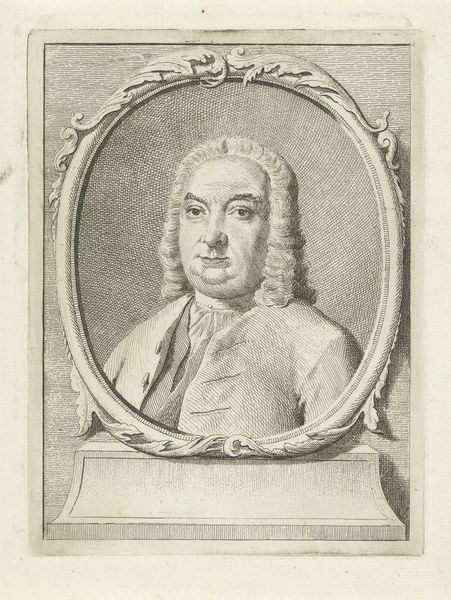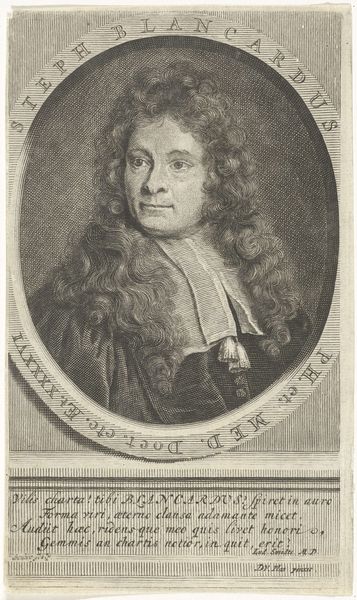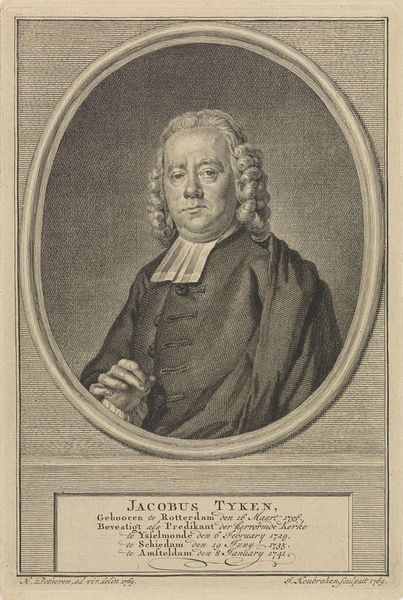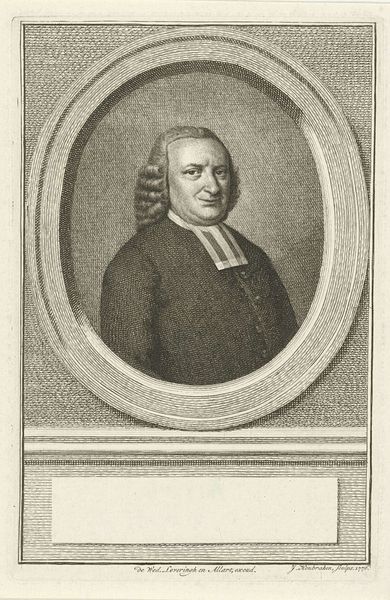
print, engraving
#
baroque
# print
#
old engraving style
#
portrait reference
#
history-painting
#
engraving
Dimensions: height 167 mm, width 114 mm
Copyright: Rijks Museum: Open Domain
Editor: This is “Portrait of an Unknown Man,” an engraving dating between 1708 and 1780 by Jacob Houbraken. It feels very formal, almost staged. How do you interpret this work? Curator: The formality you note is deliberate. This kind of portrait functioned almost as a symbolic stand-in for the individual. The ornate frame around the sitter reinforces this idea. It separates him from the everyday and elevates him to an almost iconic status. Think about the wig; what does it communicate? Editor: It makes him seem… important? Like he’s part of a specific social class. Curator: Precisely. Wigs were potent symbols of status and power. They were expensive and required upkeep, immediately signaling wealth and belonging to the elite. Note, too, how the gaze engages the viewer. This is not just a depiction; it's an assertion of presence and authority. Can you see any hint of his identity reflected in the engraving beyond wealth? Editor: Not really, his expression feels quite neutral to me. It's interesting how much information is conveyed through these established symbols of the time. Curator: Indeed. Portraits like these reveal as much about societal values and power structures as they do about the individual. The symbolism becomes a visual language for understanding the values cherished during the Baroque period. Editor: So, it’s less about the man himself and more about what he represents? Curator: In many ways, yes. It's about fitting into a specific social and historical narrative. But within that narrative, what individual elements stand out to you, however subtle? It might tell a story about the sitter that we might miss at first glance. Editor: This has really given me a new perspective on understanding the symbolism embedded in art. Thank you!
Comments
No comments
Be the first to comment and join the conversation on the ultimate creative platform.
